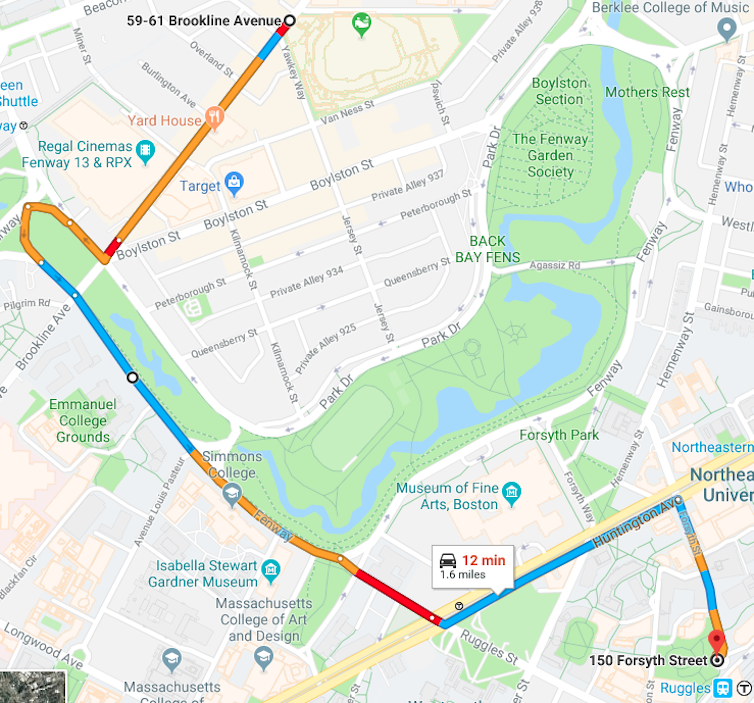


 Nothing in the universe can stop you from letting go and starting over.
Nothing in the universe can stop you from letting go and starting over.  Guy Finley
Guy Finley
By measuring a sequence of turns, and stringing them together as a person travels, we could make a map of their movements. (In our work, we knew which city we were tracking people through, but a similar approach could be used to figure out what city a person was in.)

Imagine we observe a person in Boston heading southwest, turning 100 degrees to the right, making a sharp U-turn to the left to head southeast, turning slightly to the right, continuing straight, then following a shallow curve to the left, a quick jog to the right, bumping up and down more than usual on a road, turning 55 degrees right, and turning 97 degrees left and then making a slight curve right before stopping.
We developed an algorithm to match those movements up against a digitized map of the streets of the city the user was in, and determined which were the most likely routes a person might take. Those movements could identify a route driving from Fenway Park, along the Back Bay Fens, past the Museum of Fine Arts and arriving at Northeastern University.
We were even able to refine our algorithm to incorporate information about curves in roads and speed limits to help narrow options. We produced our results as a list of possible paths ranked by how likely the algorithm thought they were to match the actual route. About half the time, in most cities we tried, the real path a user followed was in the top 10 items on the list. Further refining the map data, sensor readings and the matching algorithm could substantially improve our accuracy. Again, this type of capability could be added to any app by a malicious developer, letting innocent-appearing apps snoop on their users.
Our research group is continuing to investigate how side-channel attacks can be used to reveal a variety of private information. For instance, measuring how a phone moves when its owner is walking could suggest how old a person is, whether they are male (with the phone in a pocket) or female (typically with the phone in a purse), or even health information about how steady a person is on his feet or how often she stumbles. We assume there is more your phone can tell a snoop – and we hope to find out what, and how, to protect against that sort of spying.
© Guevara Noubir